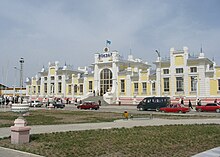Trans-Aral Railway
| Trans-Aral Railway | |||||||||||||||||||||||||||||||||||||||||||||||||||||||||||||||||||||||||||||||||||||||||||||||||||||||||||||||||||||||||||||||||||||||||||||||||||||||||||||||||||||||||||||||||||||||||||||||||||||||||||||||||||||||||||||||||||||||||||||||||||||||||||||||||||||||||||||||||||||||||||||||||||||||||||||||||||||||||||||||||||||||||||||||||||||||||||||||||||||||||||||
|---|---|---|---|---|---|---|---|---|---|---|---|---|---|---|---|---|---|---|---|---|---|---|---|---|---|---|---|---|---|---|---|---|---|---|---|---|---|---|---|---|---|---|---|---|---|---|---|---|---|---|---|---|---|---|---|---|---|---|---|---|---|---|---|---|---|---|---|---|---|---|---|---|---|---|---|---|---|---|---|---|---|---|---|---|---|---|---|---|---|---|---|---|---|---|---|---|---|---|---|---|---|---|---|---|---|---|---|---|---|---|---|---|---|---|---|---|---|---|---|---|---|---|---|---|---|---|---|---|---|---|---|---|---|---|---|---|---|---|---|---|---|---|---|---|---|---|---|---|---|---|---|---|---|---|---|---|---|---|---|---|---|---|---|---|---|---|---|---|---|---|---|---|---|---|---|---|---|---|---|---|---|---|---|---|---|---|---|---|---|---|---|---|---|---|---|---|---|---|---|---|---|---|---|---|---|---|---|---|---|---|---|---|---|---|---|---|---|---|---|---|---|---|---|---|---|---|---|---|---|---|---|---|---|---|---|---|---|---|---|---|---|---|---|---|---|---|---|---|---|---|---|---|---|---|---|---|---|---|---|---|---|---|---|---|---|---|---|---|---|---|---|---|---|---|---|---|---|---|---|---|---|---|---|---|---|---|---|---|---|---|---|---|---|---|---|---|---|---|---|---|---|---|---|---|---|---|---|---|---|---|---|---|---|---|---|---|---|---|---|---|---|---|---|---|---|---|---|---|---|---|---|---|---|---|---|---|---|---|---|---|---|---|---|---|---|---|---|---|---|---|---|---|---|---|---|---|---|---|---|---|---|---|---|---|---|
|
Trans-Aral Railway in the steppe of Kazakhstan
| |||||||||||||||||||||||||||||||||||||||||||||||||||||||||||||||||||||||||||||||||||||||||||||||||||||||||||||||||||||||||||||||||||||||||||||||||||||||||||||||||||||||||||||||||||||||||||||||||||||||||||||||||||||||||||||||||||||||||||||||||||||||||||||||||||||||||||||||||||||||||||||||||||||||||||||||||||||||||||||||||||||||||||||||||||||||||||||||||||||||||||||
| Route length: | more than 2000 km km | ||||||||||||||||||||||||||||||||||||||||||||||||||||||||||||||||||||||||||||||||||||||||||||||||||||||||||||||||||||||||||||||||||||||||||||||||||||||||||||||||||||||||||||||||||||||||||||||||||||||||||||||||||||||||||||||||||||||||||||||||||||||||||||||||||||||||||||||||||||||||||||||||||||||||||||||||||||||||||||||||||||||||||||||||||||||||||||||||||||||||||||
| Gauge : | 1520 mm ( Russian gauge ) | ||||||||||||||||||||||||||||||||||||||||||||||||||||||||||||||||||||||||||||||||||||||||||||||||||||||||||||||||||||||||||||||||||||||||||||||||||||||||||||||||||||||||||||||||||||||||||||||||||||||||||||||||||||||||||||||||||||||||||||||||||||||||||||||||||||||||||||||||||||||||||||||||||||||||||||||||||||||||||||||||||||||||||||||||||||||||||||||||||||||||||||
|
|||||||||||||||||||||||||||||||||||||||||||||||||||||||||||||||||||||||||||||||||||||||||||||||||||||||||||||||||||||||||||||||||||||||||||||||||||||||||||||||||||||||||||||||||||||||||||||||||||||||||||||||||||||||||||||||||||||||||||||||||||||||||||||||||||||||||||||||||||||||||||||||||||||||||||||||||||||||||||||||||||||||||||||||||||||||||||||||||||||||||||||
The Trans-Aral Railway is a railway line that runs from southern Russia to the southeast through Kazakhstan to Uzbekistan . It is about 1900 km long and designed as a broad- gauge railway with a gauge of 1520 mm . The railway connects the Trans-Siberian Railway in the southern Russian city of Orenburg with the eponymous former Aral Sea in Kazakhstan and continues south to the Uzbek capital Tashkent . The route is part of the Eurasian Continental Bridge between Europe and China.
history

Already in 1874 there were plans to build the line. But it wasn't until the autumn of 1900 that construction began, simultaneously from both ends. The line was completed in 1906 and connected Orenburg with Tashkent , both of which were then part of the Russian Empire. In 1910 a detailed description of the construction work was published. In the first half of the 20th century, this was the only rail link between the European part of Russia and Central Asia . After the Russian Revolution in 1917 , Cossacks under the command of Alexander Dutow interrupted the railway line. This interruption and the forced cotton cultivation led to a devastating famine in Turkestan and to the fact that Tashkent achieved a certain degree of autonomy from Moscow.
course
The route begins in Orenburg , heads south after approx. 150 km across the Russian-Kazakh border and connects the cities of Aqtöbe , Aral , Baikonur (Cosmodrome), Qysylorda and Turkistan in Kazakhstan . In doing so, it follows the Syr Darya River over long distances . In Arys it has a connection to the east-branching Turkestan-Siberian Railway , which connects via Schymkent , Taras and Almaty in the direction of East Kazakhstan , China ( Korgas ) and South Siberia (Barnaul, Novosibirsk). The route ends shortly after crossing the border between Kazakhstan and Uzbekistan in Tashkent .
literature
- Peter Hopkirk : Setting the East ablaze: Lenin's dream of an empire in Asia . John Murray, London 1984.
- Н.П.Лагутина, Т.Ю. Набокова, Т.П. Филатова: Атлас Железные Дороги . Omsk 2010, pp. 48, 86, 84.
Remarks
- ↑ The kilometers according to Н.П.Лагутина, Т.Ю. Набокова, Т.П. Филатова: Атлас Железные Дороги . There only the distances between selected train stations are given, which have been added up here.
- ↑ The spelling of the station names is largely based on the Russian-language source: Н.П.Лагутина, Т.Ю. Набокова, Т.П. Филатова: Атлас Железные Дороги . As far as the Kazakh names were known, these were used.
Individual evidence
- ↑ Coulibaly, S. Deichmann u. a .: Eurasian Cities: New Realities along the Silk Road . World Bank Publications 2012, p. 26f.
- ^ Angus Hamilton: Afghanistan (= Oriental series). JB Millet Company, Boston and Tokyo 1910 (Retrieved November 23, 2014).

